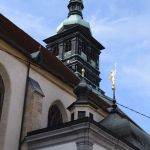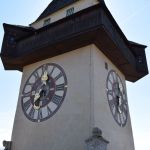Graz is the second largest city in Austria with a population of over 300,000. It is the capital of Styria and has maintained its charming and colorful buildings throughout the years.

Mausoleum of Emperor Ferdinand II was built from 1614 until 1638 by Ferdinand's Italian court painter and architect. On the gable stands a statue of St. Catherine of Alexandria. The statue is facing the former Jesuit college. This is very fitting as St. Catherine is the patron saint of universities. Behind and to the right of the gable is a gold eagle perched on a globe. This symbolizes the Emperor's power and position on top of the world.
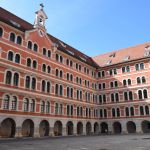
The former Jesuit college is located across from Emperor Ferdinand's mausoleum. In 1585 Graz University was founded and today, it's the Seminary.
In 2005, Manfred Erjautz created a sculpture entitled Searching for Permanence. The sculpture emphasizes that nothing lasts forever. The clock at the top of the building reflects in the artificial puddle in front of the snowman forcing him to watch the passage of time as he stands still.
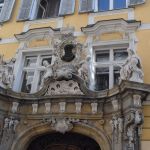
The facade of a boarding for the wealthier students of the Jesuit college. It was rather luxurious as each of the guests had their personal servant.
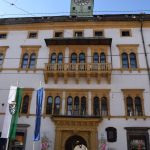
Landhaus is created in the style of Italian Renaissance. Its courtyard is lined with arches and is often the location of city festivals.

Back when a vast majority of the people were illiterate, houses had distinctive statues instead of street names and numbers.
